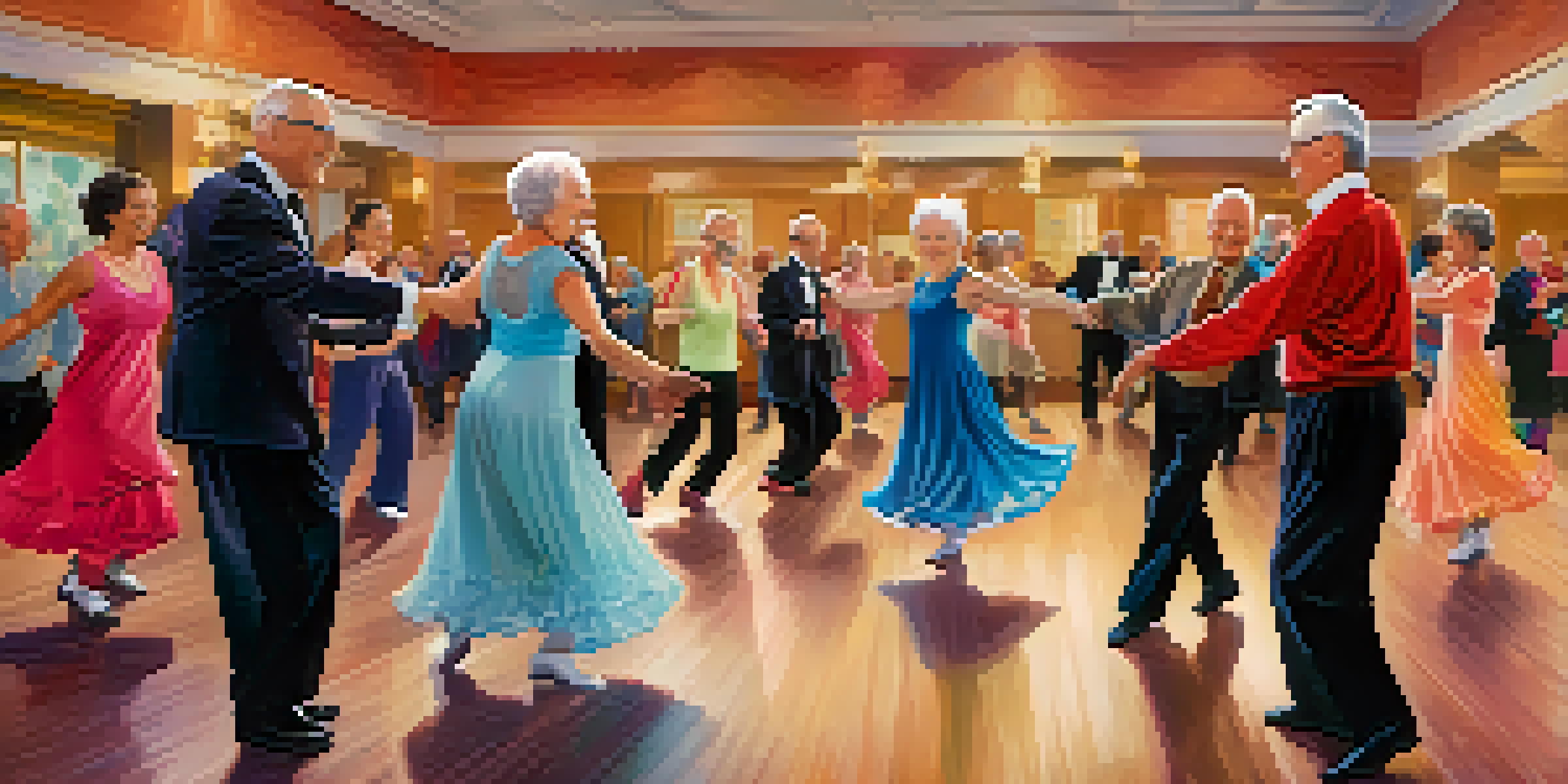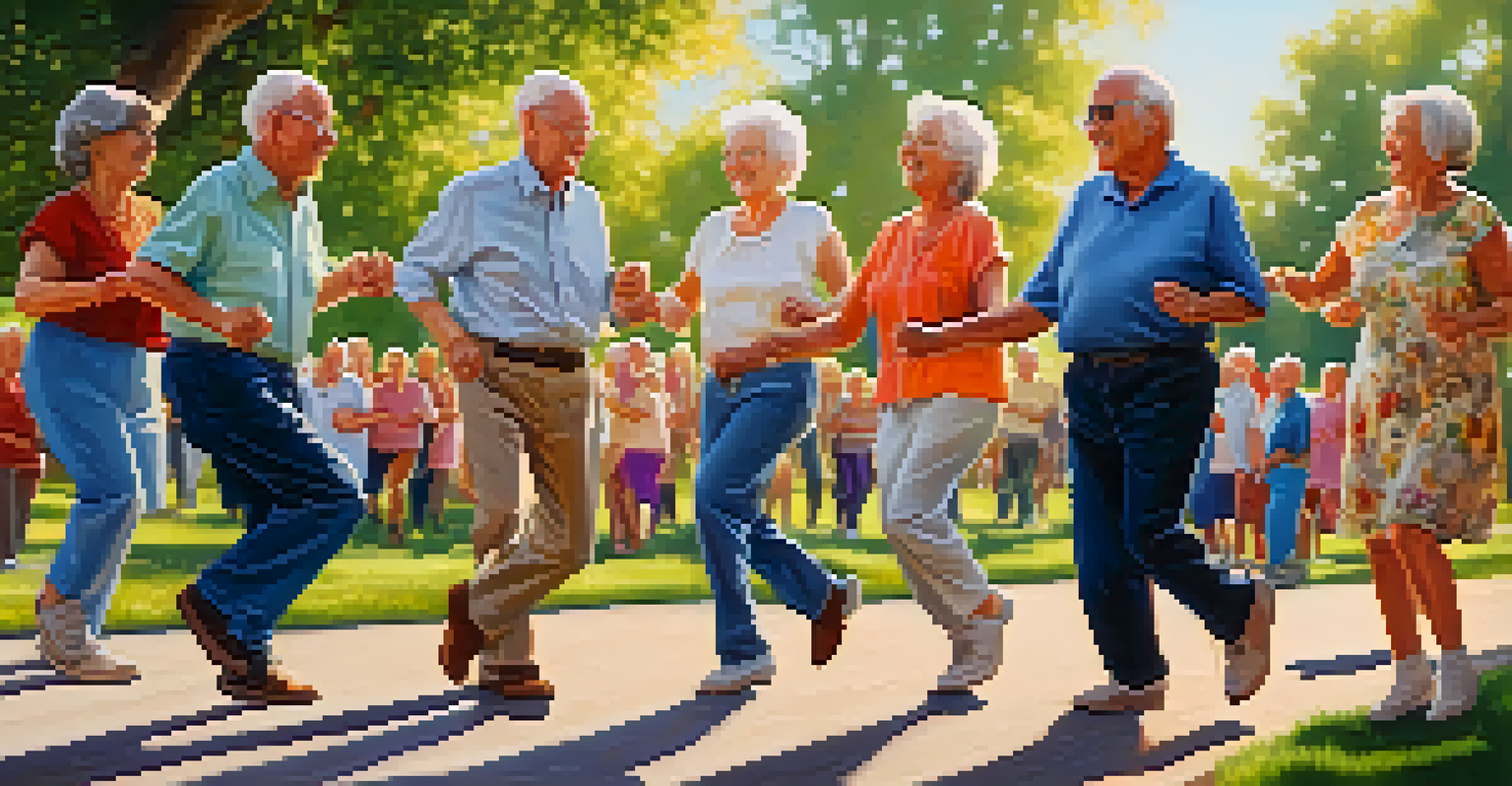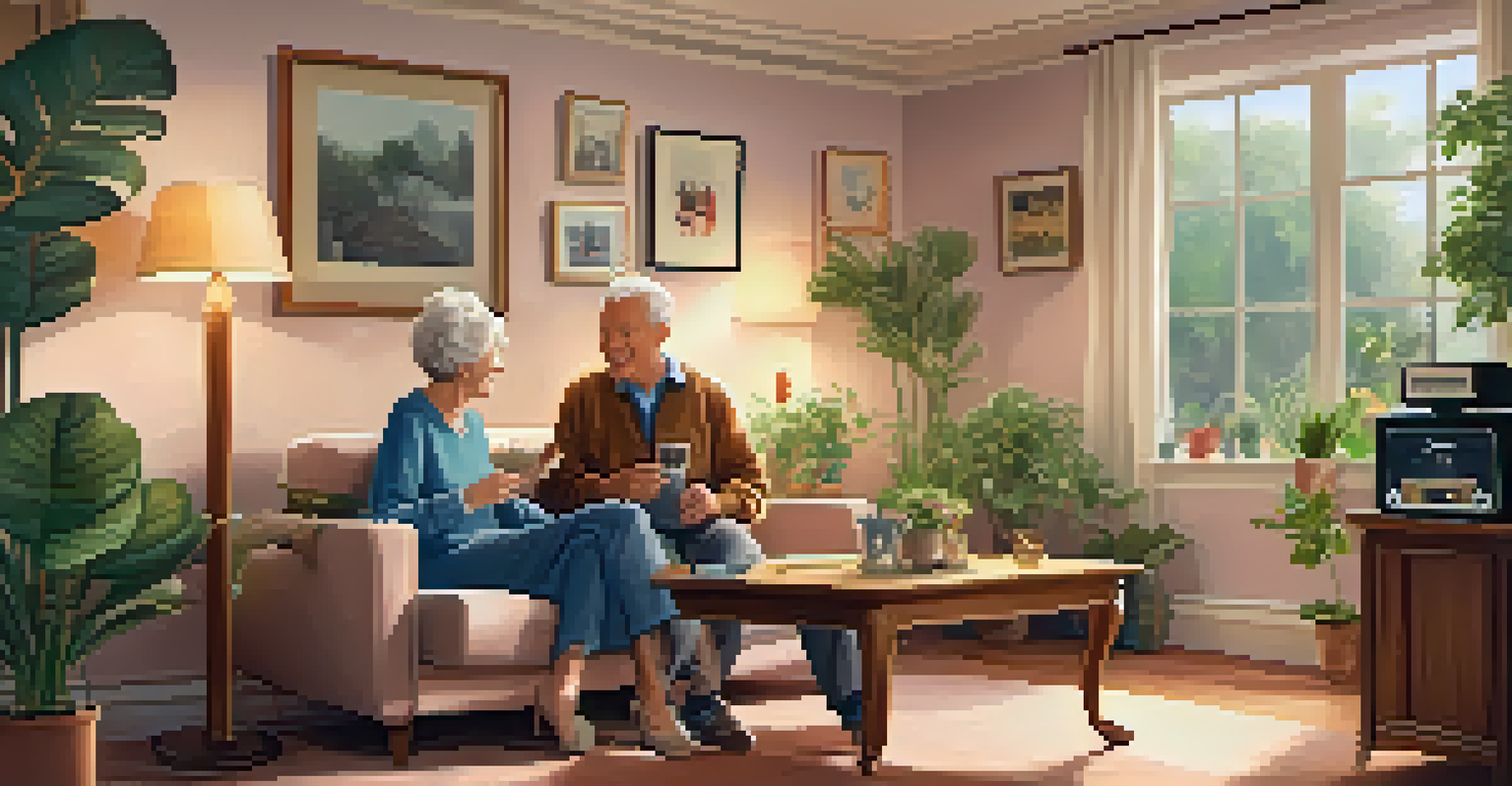The Connection Between Dance and Longevity in Seniors

Understanding Longevity: What It Means for Seniors
Longevity refers not just to living longer but also to living well. For seniors, this means maintaining physical health, mental sharpness, and emotional well-being. A longer life is more enjoyable when it’s filled with vitality and purpose, rather than just the passing of years.
The dance is a poem of which each movement is a word.
As we age, the importance of lifestyle choices becomes even clearer. Engaging in activities that promote health and happiness can make a significant difference in how we experience our golden years. It’s not just about adding years to life; it’s about adding life to those years.
This is where dance comes into play, serving as a joyful and dynamic option for seniors. By exploring the connection between dance and longevity, we can uncover the myriad benefits that this art form provides to older adults.
The Physical Benefits of Dance for Seniors
Dance is a full-body workout that can boost cardiovascular health, improve flexibility, and enhance muscle strength. For seniors, these physical benefits are crucial in maintaining independence and reducing the risk of falls and other injuries. Just imagine twirling around the dance floor, feeling your heart rate increase while you have fun!

Moreover, dancing helps improve balance and coordination, which can decline with age. Regular practice can help seniors regain or maintain their physical capabilities, making everyday movements easier and safer. As they dance, they not only enjoy the rhythm but also build a stronger body.
Dance Enhances Physical Health
Engaging in dance can improve cardiovascular health, flexibility, and strength, helping seniors maintain independence and reduce injury risks.
Incorporating dance into a senior’s routine can be an enjoyable way to promote fitness without the monotony of traditional exercise. It fosters a sense of achievement and encourages social interaction, both of which are vital for overall health.
Mental Well-Being and Dance: A Perfect Match
Beyond physical health, dance has profound effects on mental well-being. Engaging in dance can boost mood and alleviate symptoms of anxiety and depression, which are common among seniors. The joy of moving to music can help lift spirits and provide a sense of freedom.
Dance is the hidden language of the soul.
Studies have shown that learning new dance steps and routines can also enhance cognitive function. It challenges the brain, keeping it active and engaged, much like solving puzzles or playing memory games. This mental stimulation is essential for maintaining sharpness as we age.
Furthermore, dance provides a creative outlet that encourages self-expression. This creative aspect fosters a sense of identity and purpose, which can be incredibly fulfilling for seniors navigating life changes.
The Social Aspects of Dance in Senior Communities
Dance is inherently social, making it a fantastic way for seniors to connect with others. Group dance classes or social dance events create opportunities for friendships to blossom, reducing feelings of loneliness and isolation. Just picture a lively gathering where laughter and movement fill the air!
Participating in dance fosters a sense of belonging and community. It creates bonds among participants, enriching lives and providing support networks that are vital for emotional health. These connections can be particularly important for seniors who may have lost partners or friends.
Boosts Mental Well-Being
Dance can elevate mood, alleviate anxiety and depression, and enhance cognitive function through mental stimulation and creative expression.
Moreover, dancing in a group setting encourages collaboration and teamwork, which can be incredibly satisfying. As seniors dance together, they share experiences, stories, and laughter, cultivating a vibrant social life.
Types of Dance Suitable for Seniors
When it comes to dance, there’s no shortage of styles that seniors can enjoy. From ballroom to line dancing, each offers unique benefits and caters to different preferences. The key is to find a style that resonates with the individual, making the experience enjoyable.
Gentle forms of dance, such as tai chi or slow-paced ballroom dance, are excellent options for those who may have mobility challenges. These styles promote stability while providing a low-impact workout that’s easy on the joints. It’s all about moving gracefully at a pace that feels comfortable.
On the other hand, more energetic styles like salsa or swing can invigorate those looking for a lively challenge. The variety ensures that there’s something for everyone, making it easy to get started and keep moving.
Incorporating Dance into Daily Life for Seniors
Incorporating dance into a senior's daily life doesn’t have to be daunting. Simple activities like dancing while doing household chores or joining a local dance class can make a significant difference. It’s about finding joy in movement, no matter how small.
Seniors can also use technology to their advantage. Online dance tutorials and virtual classes can provide flexibility and convenience, making it easy to join in from the comfort of home. Whether it’s a quick salsa lesson or a calming waltz, the options are endless.
Fosters Social Connections
Participating in dance creates opportunities for social interaction, reducing feelings of loneliness and building supportive communities among seniors.
Creating a regular dance routine can help establish consistency, making it a cherished part of the day. Just a few minutes of dancing can uplift spirits and promote overall well-being, proving that every little bit counts in the pursuit of longevity.
Conclusion: Dance as a Pathway to Longevity for Seniors
In conclusion, the connection between dance and longevity for seniors is undeniable. From enhancing physical health to boosting mental well-being and fostering social connections, dance offers a holistic approach to living longer and happier. It’s like discovering a treasure chest filled with benefits just waiting to be explored.
As seniors embrace dance, they not only enrich their own lives but also inspire others to stay active and engaged. The joy of movement can ripple through communities, promoting a culture of health and vitality that uplifts everyone.

So, whether it’s a gentle sway to a favorite tune or an energetic salsa, let dance be a vibrant part of life. After all, age is just a number, and it’s never too late to start dancing your way to a longer, happier life.